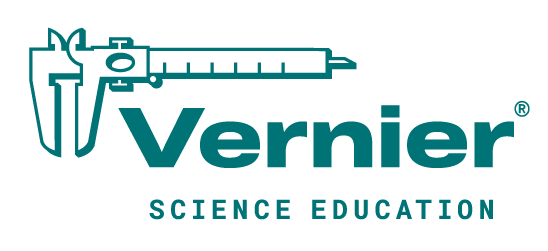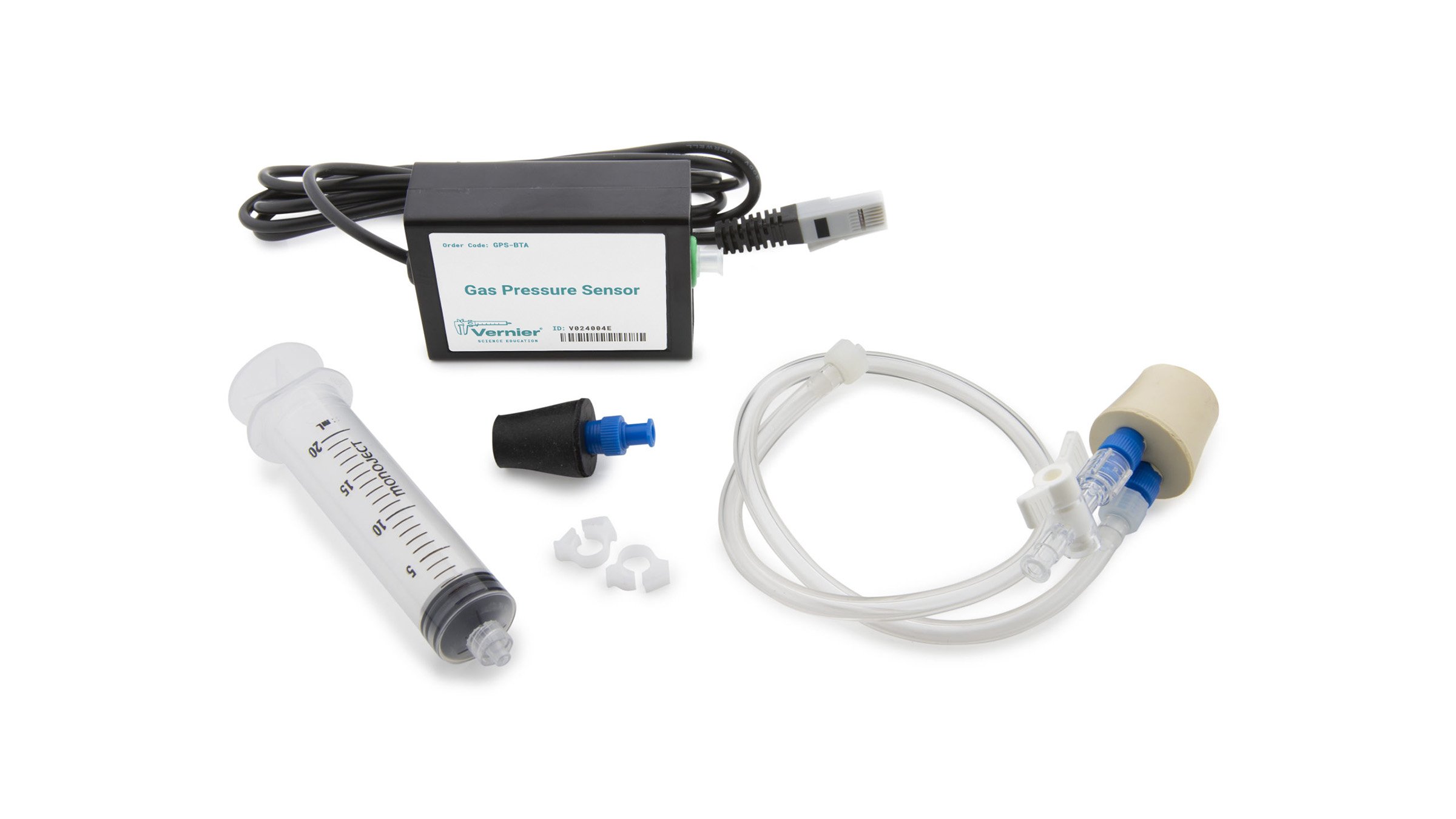Troubleshooting
- Primary Test: Plug the sensor into a Vernier interface and run the data-collection program. The units for the default readings are kPa and they should be reasonable for the altitude at which the sensor is being used (around 101 kPa at sea-level).
- Secondary Test: Connect a 20 mL syringe, from the Accessories Kit, to the sensor. Move the plunger of the syringe inward and check that the pressure readings increase.
Additional Troubleshooting
- Can I Order Pressure Sensor Accessories Separately?
- What is the internal volume of the Gas Pressure Sensor?
- My Gas Pressure Sensor (GPS-BTA) readings are not what I expect them to be.
- I am using the Respiration Monitor Belt with Logger Pro. Why does the program always report the respiration rate as zero?
- Is there a list of chemicals that should not be used with the Gas Pressure Sensor?
- What plastic tubing is used for the Pressure Sensor Accessories Kit?
- What type of plastic is the Gas Pressure Sensor 2-Way Valve?
- Where can I find low-friction glass syringes for combined gas law experiments done with our Gas Pressure Sensor?
- What is the calibration information for the Gas Pressure Sensor?
Specifications
- Sensing Element: Honeywell SSCMRNN030PAAA5
- Pressure Range: 0 to 210 kPa (0 to 2.1 atm or 0 to 1600 mmHg)
- Maximum Pressure that the sensor can tolerate without permanent damage: 405 kPa (4 atm)
- Combined Linearity and Hystersis: typical ±0.25% at full scale
- Response Time: 10 ms
- Accuracy using factory calibration: ±4 kPa
- Accuracy using one-point custom calibration at atmosphere: ±3 kPa
- Resolution: 0.06 kPa
- Pressure Type: Absolute (Output is proportional to the difference between applied pressure and a built-in vacuum reference)
- Factory Calibrations
⚬ kPa: slope = 51.71; intercept = -25.86
⚬ atm: slope = 0.5103; intercept = -0.25
⚬ mm Hg: slope = 387.8; intercept = -190.4
For more on factory calibration, see What is the calibration information for the Gas Pressure Sensor?
Calibration
Caibrate? You do not have to perform a new calibration when using the Gas Pressure Sensor. The sensor is calibrated prior to shipping.
If you would like to perform your own calibration, follow the steps described here. A one-point calibration at atmosphere is adequate for most applications.
- Connect the Gas Pressure Sensor to an interface and launch the software.
- Initiate the calibration procedure and make sure the one-point calibration option is checked. This should be the default option.
- Enter the actual pressure as the known value for Reading 1.
- When the voltage reading stabilizes, click Keep.
- If you want to save the calibration onto the sensor, click the storage tab and save to the sensor.
- Click or tap Done to complete the calibration process.
For additional calibration information, see How do I calibrate my sensor?
Related Products
- Gas Pressure Sensor Bulb (GPS-BULB1)
- Pressure Sensor 400 (PS400-BTA)
- Go Direct® Wide-Range Pressure Sensor (GDX-WRPL)
- Go Direct® Gas Pressure Sensor (GDX-GP)
Replacement Parts
- Gas Pressure Sensor Replacement Parts (PS-ACC)
- #1 One-Hole Rubber Stopper (PS-STOP1)
- #5 Two-Hole Rubber Stopper (PS-STOP5)
- Luer-Lock Connector (PS-LUER)
- Plastic 2-Way Valve (PS-2WAY)
- Plastic Tubing (PS-TUBING)
- Stopper Stem (PS-STEM)
- Plastic Syringe (PS-SYR10)
- Plastic Tubing Clamps (Pack of 100) (PTC)

